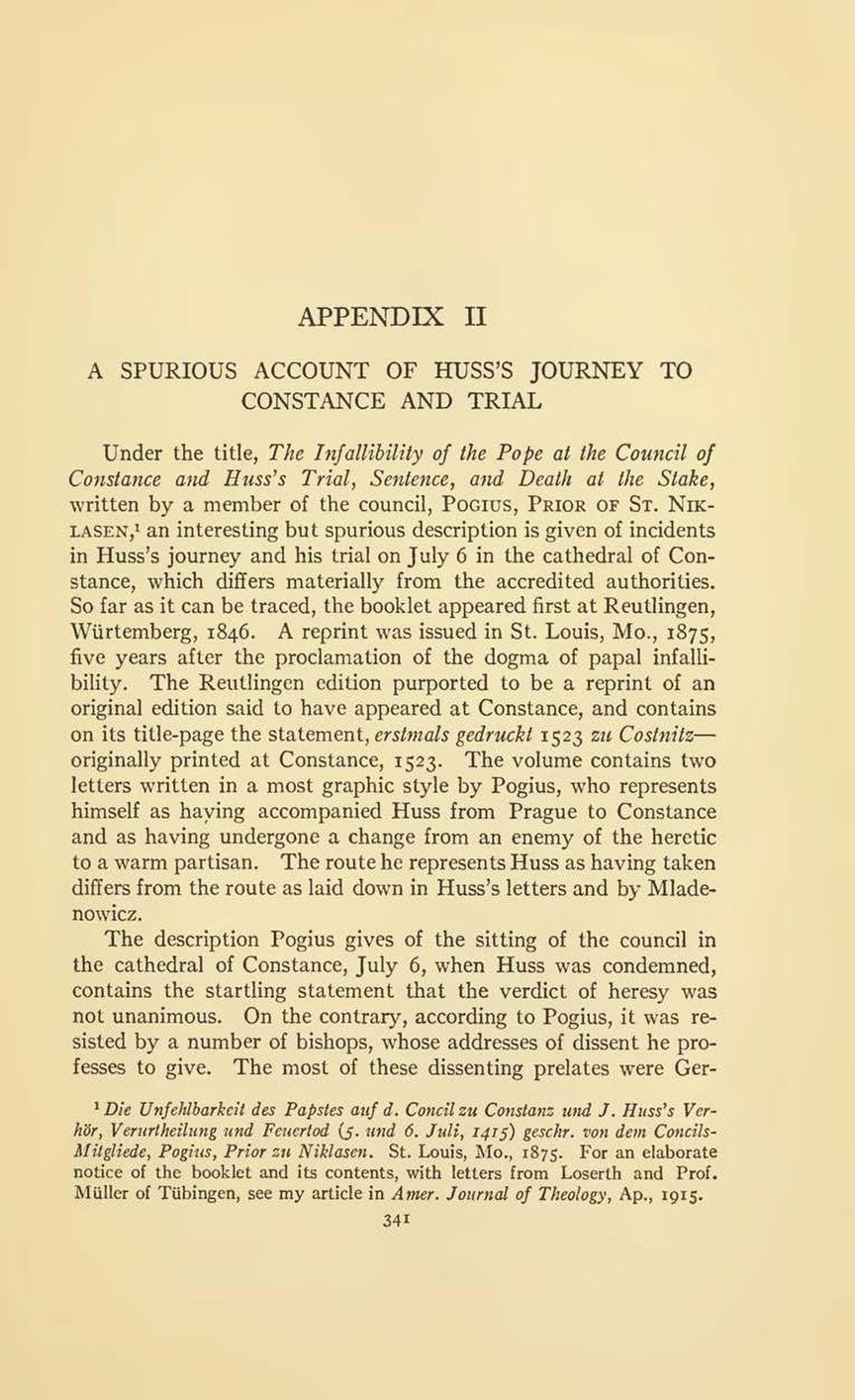APPENDIX II
A SPURIOUS ACCOUNT OF HUSS’S JOURNEY TO CONSTANCE AND TRIAL
Under the title, The Infallibility of the Pope at the Council of Constance and Huss’s Trial, Sentence, and Death at the Stake, written by a member of the council, Pogius, Prior of St. Niklasen,[1] an interesting but spurious description is given of incidents in Huss’s journey and his trial on July 6 in the cathedral of Constance, which differs materially from the accredited authorities. So far as it can be traced, the booklet appeared first at Reutlingen, Würtemberg, 1846. A reprint was issued in St. Louis, Mo., 1875, five years after the proclamation of the dogma of papal infallibility. The Reutlingen edition purported to be a reprint of an original edition said to have appeared at Constance, and contains on its title-page the statement, erstmals gedruckt 1523 zu Costnitz—originally printed at Constance, 1523. The volume contains two letters written in a most graphic style by Pogius, who represents himself as having accompanied Huss from Prague to Constance and as having undergone a change from an enemy of the heretic to a warm partisan. The route he represents Huss as having taken differs from the route as laid down in Huss’s letters and by Mladenowicz.
The description Pogius gives of the sitting of the council in the cathedral of Constance. July 6, when Huss was condemned, contains the startling statement that the verdict of heresy was not unanimous. On the contrary, according to Pogius, it was resisted by a number of bishops, whose addresses of dissent he professes to give. The most of these dissenting prelates were Ger-
- ↑ Die Unfehlbarkeit des Papstes auf d. Concil zu Constanz und J. Huss’s Verhör, Verurtheilung und Feuertod (5. und 6. Juli, 1415) geschr. von dem Concils-Mitgliede, Pogius, Prior zu Niklasen. St. Louis. Mo., 1875. For an elaborate notice of the booklet and its contents, with letters from Loserth and Prof. Müller of Tübingen, see my article in Amer. Journal of Theology, Ap., 1915.
341
